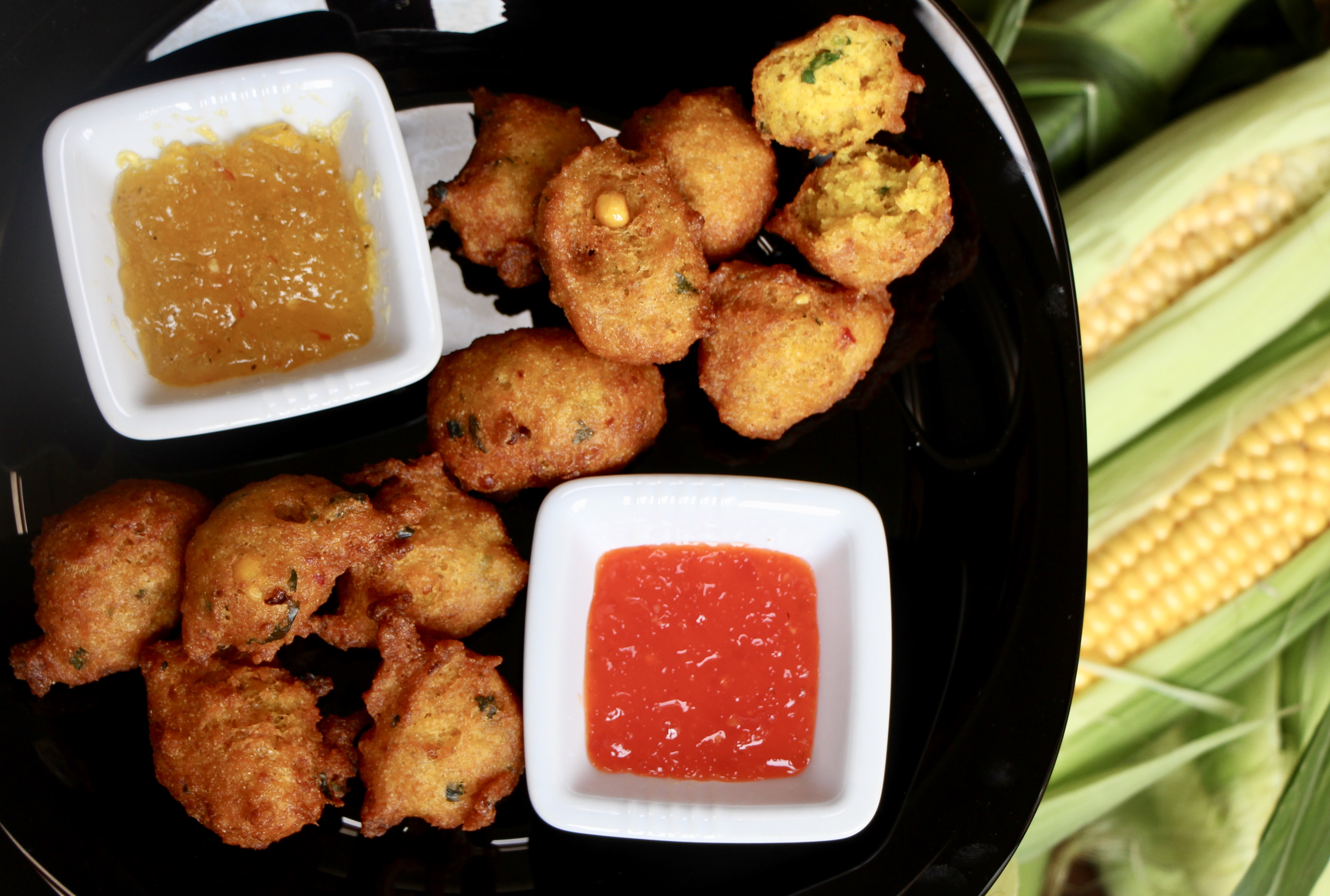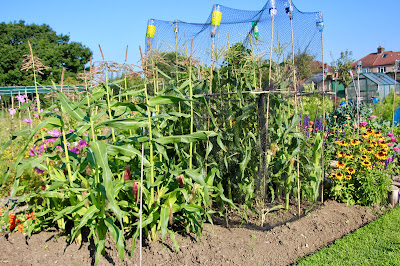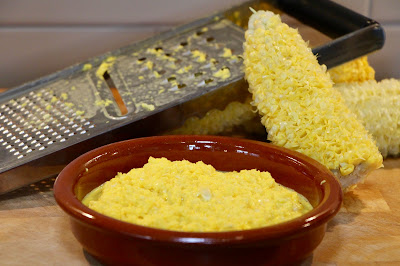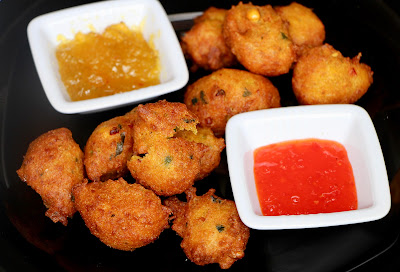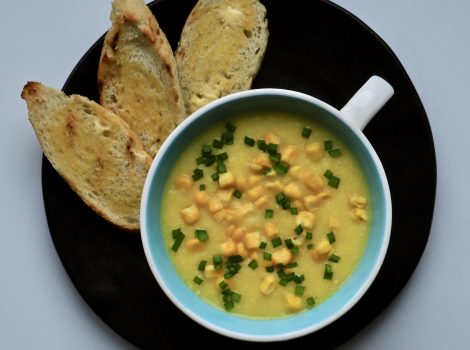Pulped Sweetcorn Bhajiya
Bhajjis or Bhajiya:
Why is the humble Bhajiya (or Pakora) known here in UK, as Bhajji; I will never know. For the past 25 years I have been intrigued and still cannot get a conclusive answer, or get my head around the word. The word Bhajji, in my opionion, is incorrectly describing this much loved street food snack. What makes it worse, is that our Indian Restaurants and Pop up stalls describe them as Bhajjis too. Please tell me is there an Indian Dialect which describes their Pakoras as Bhajjis; anyone, please educate me!
So far, I feel this is a case of Chicken Tikka Masala all over again.
Ok, I have had my little say in the matter of Bhajiya vs Bhajji, now, onwards with the blog:
Since having an allotment, 6 years running, I have not been successful at growing Sweetcorn, with either the weather not being favourable, or Mice claiming them before I get a look in, but the worst attack was last year, from the Crows and Magpies. These birds did not leave a single cob untouched in a large section of our allotment site.
This year, we were all ready for this pest. At one point, the allotment shop was sold out of the 8ft Bamboo canes. A size that rarely got a second glance in the previous years. Our plans to ‘fortify’ the Sweetcorn plants worked.
The variety I have grown for the past 2 years is an open pollinated Sweetcorn called Special Swiss. As soon as seed heads were forming on tops of the plants; just to make sure plants were being pollinated, I would work my way outside-in, shaking the plants, to allow the pollen to float to the other sweetcorn plants in the 4 x 4 grid formation. Once beards were forming on the cobs, it was time to net up and tuck the plants in. Allowing the cobs to swell up rather then being pecked at.
When making Bhajiyas or Pakoras, Chick pea flour is used as a base. Here in my recipe I have not used Chickpea flour instead kept the Sweetcorn pulp and Semolina to near equal quanitites. In this recipe it is best to use freshly grated sweetcorn, allowing only pulp to gather, leaving the kernel shells still attached to the cob. Yes this process is quite messy and laborious, but all worth it, especially when you bite into the crunchy crispy Bhajiya with yet soft light textured centre.
Place a cup of pulped sweetcorn in a bowl, with approximately 3/4 cup course semolina, add a little at a time, making sure the consistency of the pulp does not get to stiff. To this mix, add 1 tablespoon of freshly grated ginger, 1 teaspoon each of finely diced home grown green and red chilli. A heap teaspoon of Cumin powder, 1/4 teaspoon of turmeric powder and half a teaspoon of fine sea salt. Finely chopped fresh Coriander goes very well in this mix, add about 5 stalks worth, and lastly a pinch of Asafoetida. Stir well and allow rest for at least 1 hour at room temperature.
I own a deep fat fryer, it is all nicely boxed up and adorning a shelf somewhere in the Garage, I much rather use an old fashion flat bottom Kadai
Heat enough oil in a pan, as the batter will be dropped into the hot oil, and when the temperature is just right, the batter when dropped, will resurface immediately. I use my hand to drop the batter but you may use a tablespoon to spoon the batter and a teaspoon to slide it into the hot oil.
When the oil is ready, check the consistency of the batter, if necessary, add a teaspoon of water at a time into the batter if it looks too thick, a droppable consistency is what we are after. Now add 1 tablespoon of sunflower oil and 1 teaspoon of Bicarbonate of Soda or fruit salt, to the batter and stir vigorously and start dropping gently into the hot oil. Do not over fill the pan. Make more batches if necessary. Cook over a medium heat for 5 to 8 minutes until golden brown. Remove and place onto a paper towel to drain out any excess oil.
Serve immediately with home made Chilli Sauce or Mango chutney.
